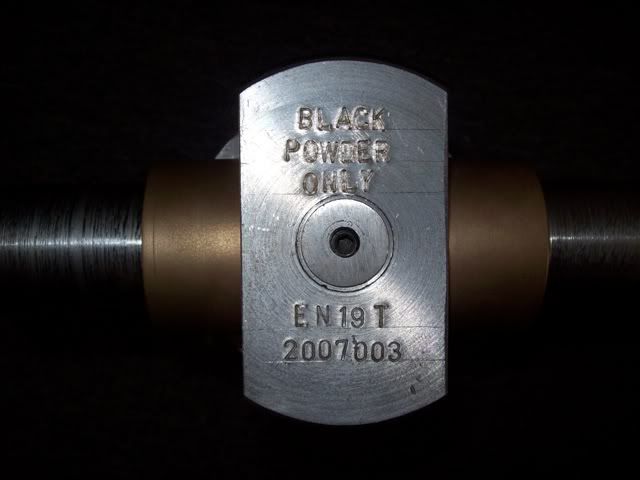Cold rolled is more likely to have flaws.
Making the barrel of 1018 or such is not a worry to me though I suppose I would like 1010 even better. But I would want hot rolled and at least gun barrel quality.
I have no idea if cold rolled comes in gun barrel or aircraft quality or higher. Place I worked used hot rolled only for barrels.
Its not the theoretical strength of the material that is a worry.
The problems are:
Does the steel contain a significant number of inclusions. If so these can result in failures at pressure levels far below its technical "yield". Aircraft has fewer inclusions than Gun Barrel.
What are the inclusions? Lead can form inclusions in steel as will other additives designed to make the steel easy to machine.
I ordered three barrels from a man that probably makes more barrels, military and others, than the combined production of ML barrels for the custom trade and he went into a spontaneous rant on leaded steels in the course of the conversation. He flat stated he would not have leaded steel in the shop. Yes they make leaded 4140 BTW.
Alloy.
If you choose the wrong alloy the barrel may burst. Some steels have very poor resistance to internal pressure and others will not tolerate fast pressure rise. Others will work harden and become brittle.
Look into Remington's mistake a few years ago with 1140M shotgun barrels,injuries, lawsuits. Should have used something a little more durable.
So pardon me if I get nervous when people start making any gun barrel from hardware store variety steel.
If there is a brittle fracture in a cannon due to inclusions, poor alloy choice or the use of unsuitable powder someone will likely die.
Iron guns were notorious for bursting all though the American Civil War. Steel was a "little" better. The only guns that did not burst from rapid fire in combat (IIRC read the book years ago) were the bronze guns. They dissipate heat better and were not damaged by a wet mop in a hot bore.
I believe the book is titled "The Conduct of the War" put out after the CW by congress. But it was borrowed and returned 20 odd years ago. There is a section detailing the problems with artillery.
Not that being gun barrel quality is just that it DOES NOT mean the steel is suitable for gun barrels. Just that it meets inclusion criteria for that quality level.
Dan
Making the barrel of 1018 or such is not a worry to me though I suppose I would like 1010 even better. But I would want hot rolled and at least gun barrel quality.
I have no idea if cold rolled comes in gun barrel or aircraft quality or higher. Place I worked used hot rolled only for barrels.
Its not the theoretical strength of the material that is a worry.
The problems are:
Does the steel contain a significant number of inclusions. If so these can result in failures at pressure levels far below its technical "yield". Aircraft has fewer inclusions than Gun Barrel.
What are the inclusions? Lead can form inclusions in steel as will other additives designed to make the steel easy to machine.
I ordered three barrels from a man that probably makes more barrels, military and others, than the combined production of ML barrels for the custom trade and he went into a spontaneous rant on leaded steels in the course of the conversation. He flat stated he would not have leaded steel in the shop. Yes they make leaded 4140 BTW.
Alloy.
If you choose the wrong alloy the barrel may burst. Some steels have very poor resistance to internal pressure and others will not tolerate fast pressure rise. Others will work harden and become brittle.
Look into Remington's mistake a few years ago with 1140M shotgun barrels,injuries, lawsuits. Should have used something a little more durable.
So pardon me if I get nervous when people start making any gun barrel from hardware store variety steel.
If there is a brittle fracture in a cannon due to inclusions, poor alloy choice or the use of unsuitable powder someone will likely die.
Iron guns were notorious for bursting all though the American Civil War. Steel was a "little" better. The only guns that did not burst from rapid fire in combat (IIRC read the book years ago) were the bronze guns. They dissipate heat better and were not damaged by a wet mop in a hot bore.
I believe the book is titled "The Conduct of the War" put out after the CW by congress. But it was borrowed and returned 20 odd years ago. There is a section detailing the problems with artillery.
Not that being gun barrel quality is just that it DOES NOT mean the steel is suitable for gun barrels. Just that it meets inclusion criteria for that quality level.
Dan






